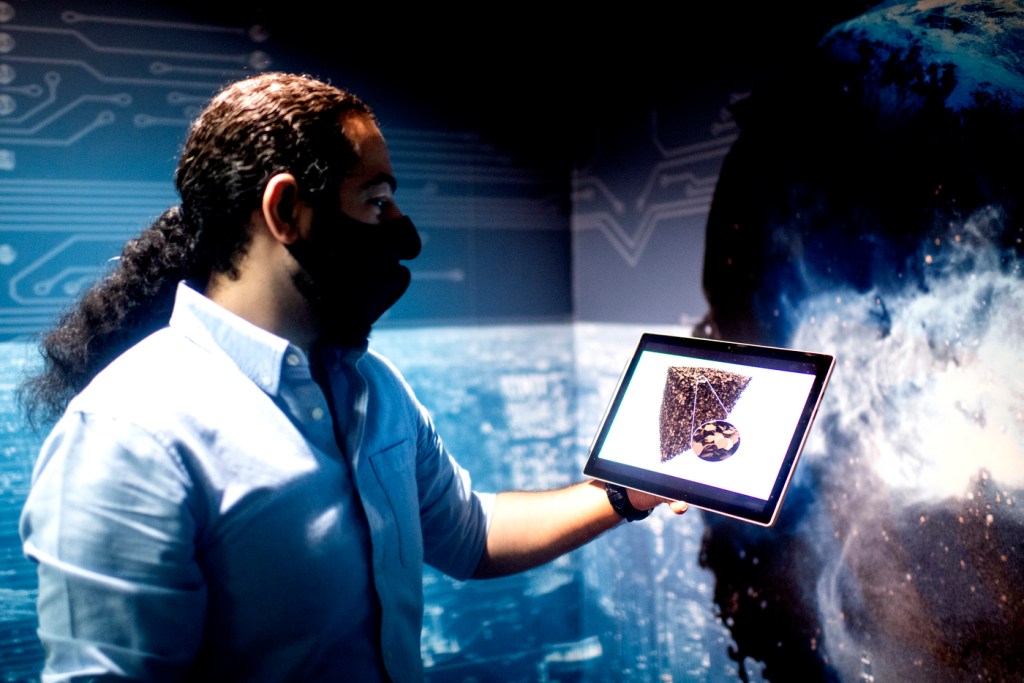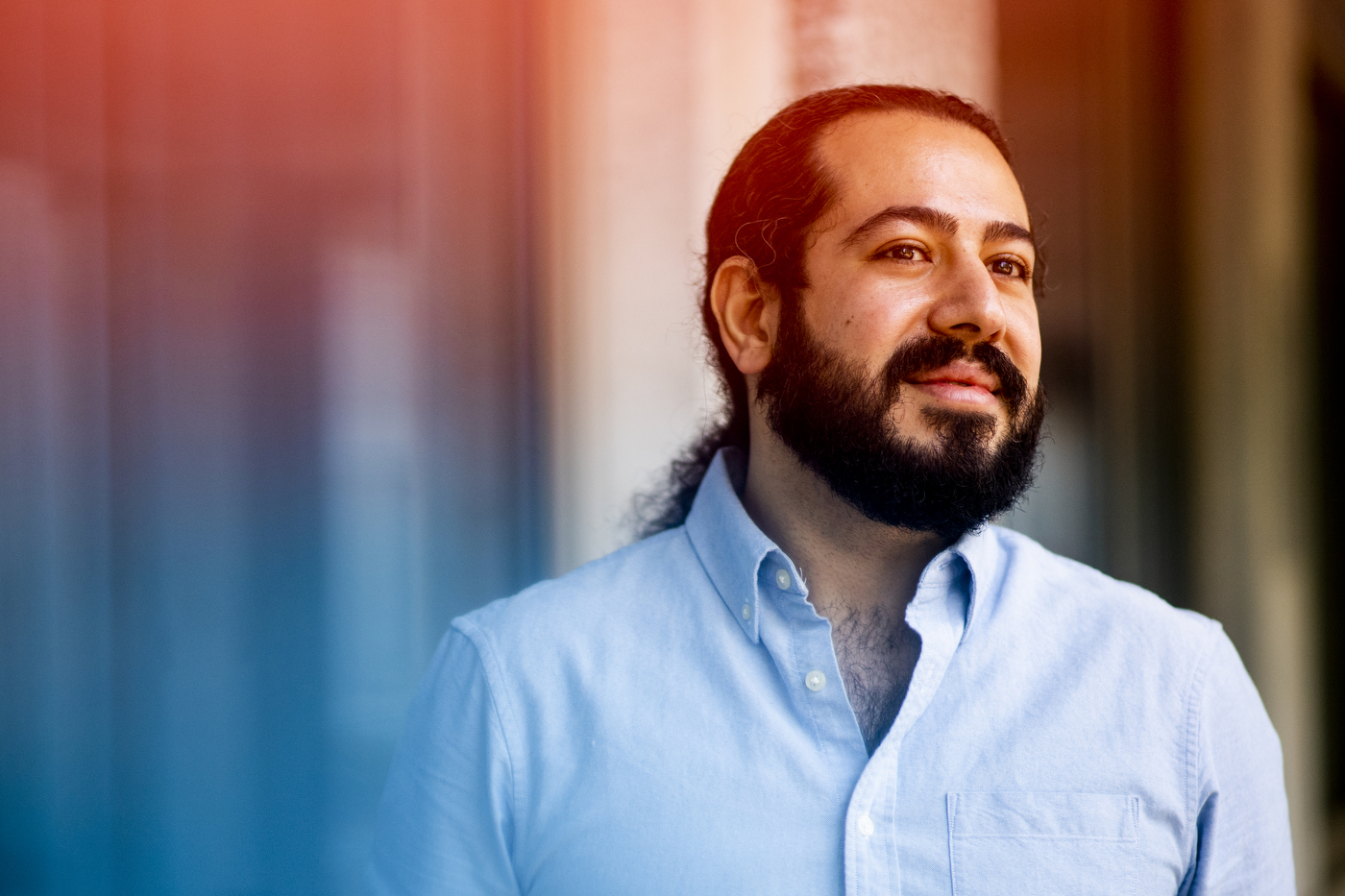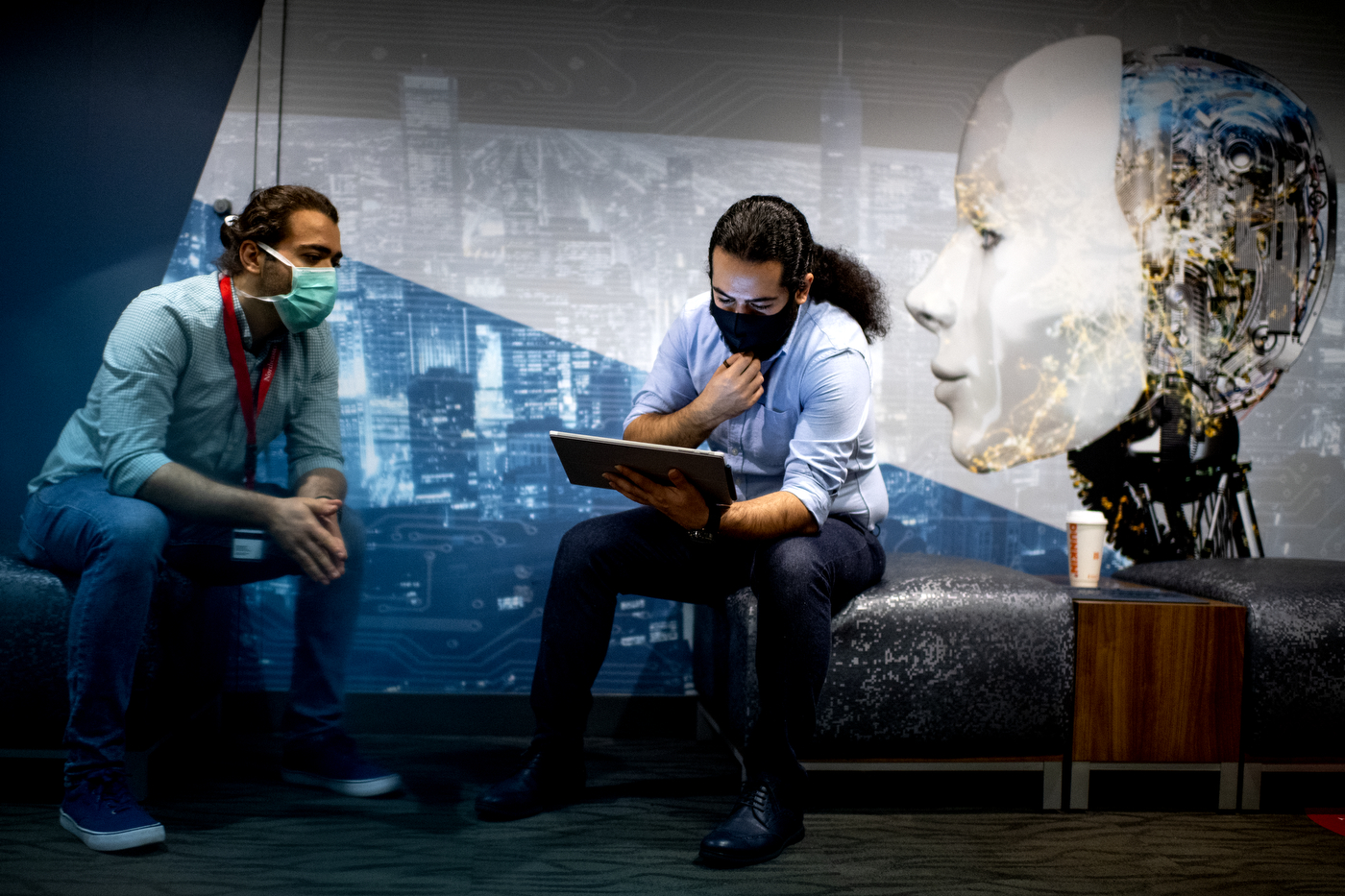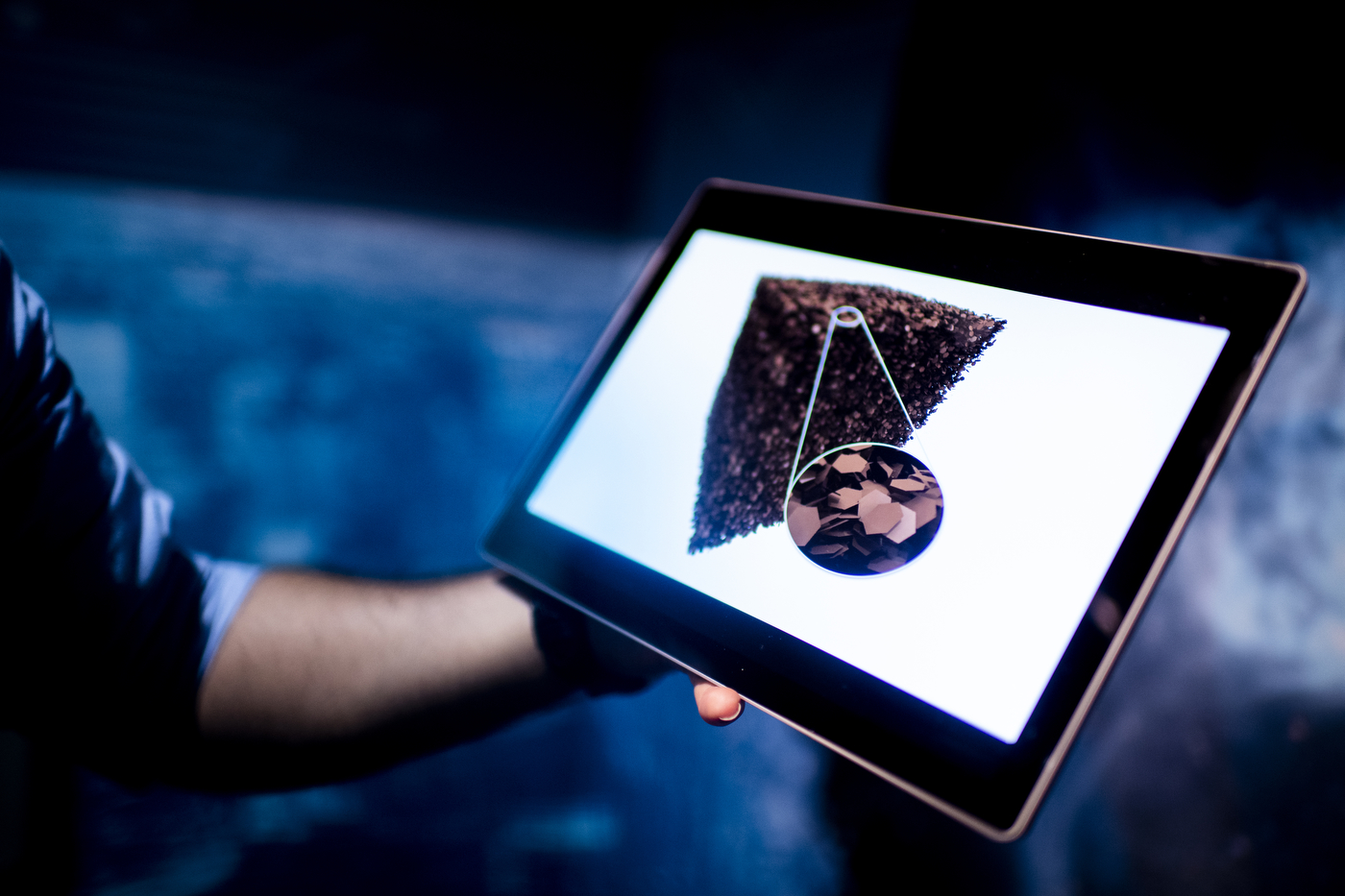He’s launching his research into space

When people say they’re just going with the flow, it usually means they are laid back and easygoing, willing to deal with the curveballs life throws at them at any given time.
That’s also the vibe you get if you sit down for a conversation with Safa Jamali, an assistant professor of mechanical and industrial engineering. But for him, it’s more than just a way of life. It’s his life’s work.
“To some extent, you just go with the flow,” says Jamali, who got his start as a polymer engineer in Iran and continued his studies in Belgium, Portugal, and the U.S. before landing at Northeastern in 2017. “I understand I talk about flow a lot, but that’s the reality of it, right?”

Safa Jamali is assistant professor mechanical and industrial engineering in the College of Engineering. Photo by Matthew Modoono/Northeastern University
He is fascinated with the way things flow and behave at microscopic scales, especially in response to the laws of physics on Earth. And now, his journey is taking another turn, as he is preparing to send his work to the International Space Station to study the effect of gravity on the tiny particles that make up gels.
Jamali recently secured funding for a project supported by the National Science Foundation to send different types of gels into space for astronauts to analyze. The idea, Jamali says, is to observe how the same particles behave and flow in the presence of extremely weak gravity, or microgravity, in Earth’s orbit.
Jamali has proposed to launch his samples as early as 2021, as part of a project with other scientific missions of the International Space Station U.S. National Laboratory. The project consists of other tests that will be run in the labs of University of California, Irvine (where gravity is inescapable) and in Jamali’s computers (where gravity is simulated).
“We’re going to prep materials, and are going to use exactly the same combinations, compositions, and samples,” Jamali says. “We give that to the astronauts, they launch to the ISS, and run the exact same experiments there that we run on the ground, basically giving a benchmark.”
On Earth, Jamali uses computer simulations to study how different kinds of particles that are thousands of times smaller than a speck of dust move within substances that are neither solids nor liquids. The overall structure and consistency of these complex fluids depend on the specific but random motion of those tiny particles that make them up.


In recent years, Jamali has been focusing on gels, which consist of a mix of different types of microparticles so small that they can stay dispersed uniformly within another liquid for long periods of time.
“The more you understand about them, it’s more fascinating,” Jamali says. “If you understand how things flow, you can design them to flow the way you want, and that’s very powerful.”
But, on Earth, that’s really difficult to understand. And it’s because of gravity.
Because gels depend on the dynamics of the tiny particles that make them up, they will stop being effective after their components separate (into a liquid and another gooey substance). The shelf life of consumer goods made with gel, for example, depends on the time it takes for that gel material to collapse.
That time isn’t influenced by chemical reactions as much as it is by the force gravity puts on each of the tiny particles in the substance.
“Gravity does that,” Jamali says. “It’s a very, very long-time process that you cannot figure out unless you can completely understand what gravity is exactly doing, and what each of these components in a material are doing.”
Gravity acts on these particles in different ways because they have different masses, eventually making the larger particles want to settle and separate. The way oil in fancy peanut butter separates over time can serve as a reductionist example of that process
Gels come in many forms and consistencies, and are extremely important materials. They are found naturally, as in the case of the gel inside aloe plants or in the mucus our bodies secrete. They can also be made for products such as the hand sanitizer gels that have become a precious commodity in 2020, or the gel in our Tylenol capsules that helps fight headaches.
Those types of fluids might seem sort of boring to the naked eye. But looking at them with a microscope reveals that they are full of fascinatingly complex dynamics: microscopic particles with their own movement, that jiggle and move around randomly.
Those properties give gels their look, feel, and function—the stuff that gets Jamali excited. He has spent the last decade working on combining his understanding of chemistry, physics, and math, and delving into the field of rheology, a branch of research that focuses on the way liquids and other non-solid materials behave and deteriorate over time.
Specifically, Jamali, has been studying colloids, a group of materials that includes gels, and which could be engineered in a way that they can come together into a substance with minimal intervention from a manufacturer. Think of a self-assembling gel as a very smart peanut butter that can put itself together. You put all the components in a jar (peanuts, oil, salt), shake the thing a few times, and voilà: You’d have a jar of perfectly blended peanut butter, no need for a food processor or other complicated processes.
To do all that efficiently with complex fluids such as gels, researchers still need to answer the question of how their microparticles collapse, or deteriorate, over time.
Still, the details of how gravity acts on gels remain a puzzle for researchers. And knowing why it takes a certain amount of time for gels to coarsen, or how to try to delay the process, is one of the main questions Jamali wants to tackle with his research.
“On Earth, this particle motion, these microstructure or microscopic interactions, are intertwined with gravity,” he says. “They’re acting at the same time—but which one is doing what? We don’t really know.”
By sending his samples to space, Jamali wants to shed some light on the mystery of how gravity affects the flow of complex fluids, and perhaps improve and design materials in a way that they could better resist gravity on Earth.
And, though it still might be early to flirt with possibilities for how to use that kind of research, Jamali is thinking in the realm of better drugs that rely on gel to deliver strategic dosages of medicine, flow batteries that rely on complex fluids to perform sustainably, and technologies to improve the way oil is extracted in deep water extraction rigs.
For media inquiries, please contact media@northeastern.edu.





